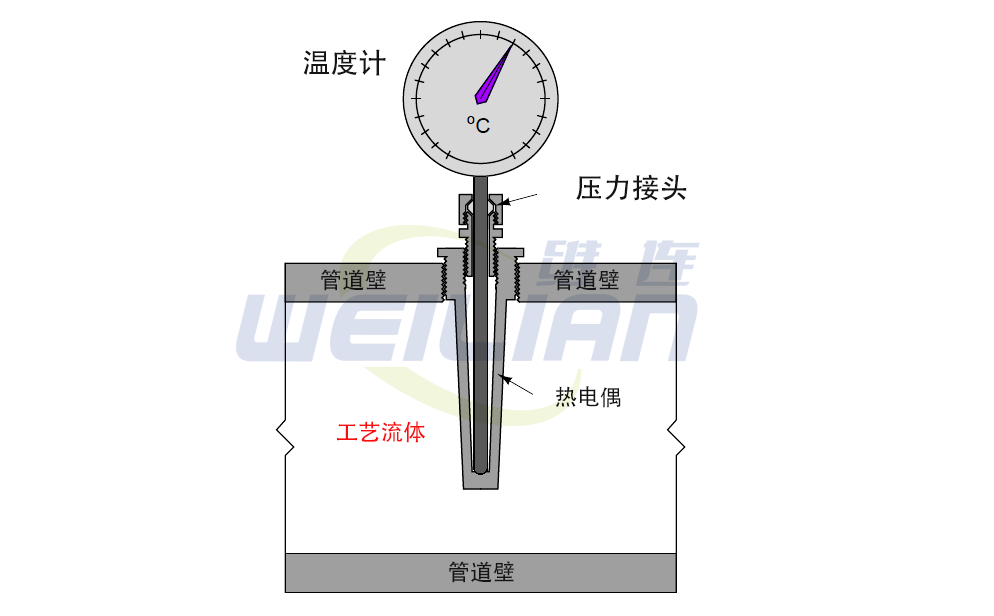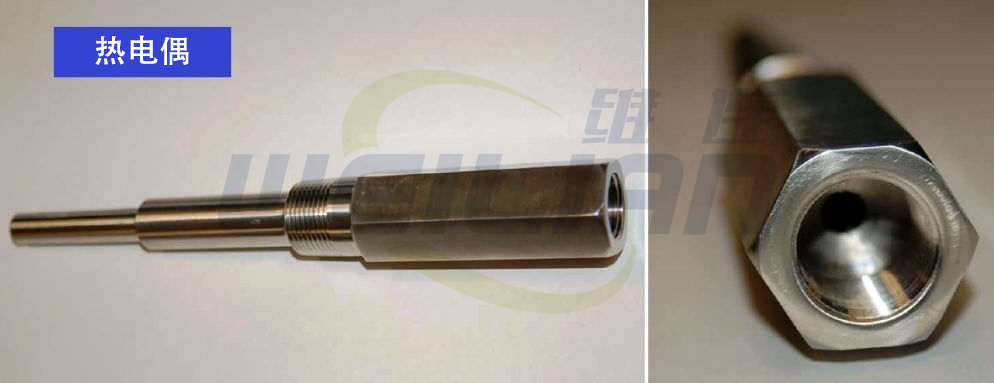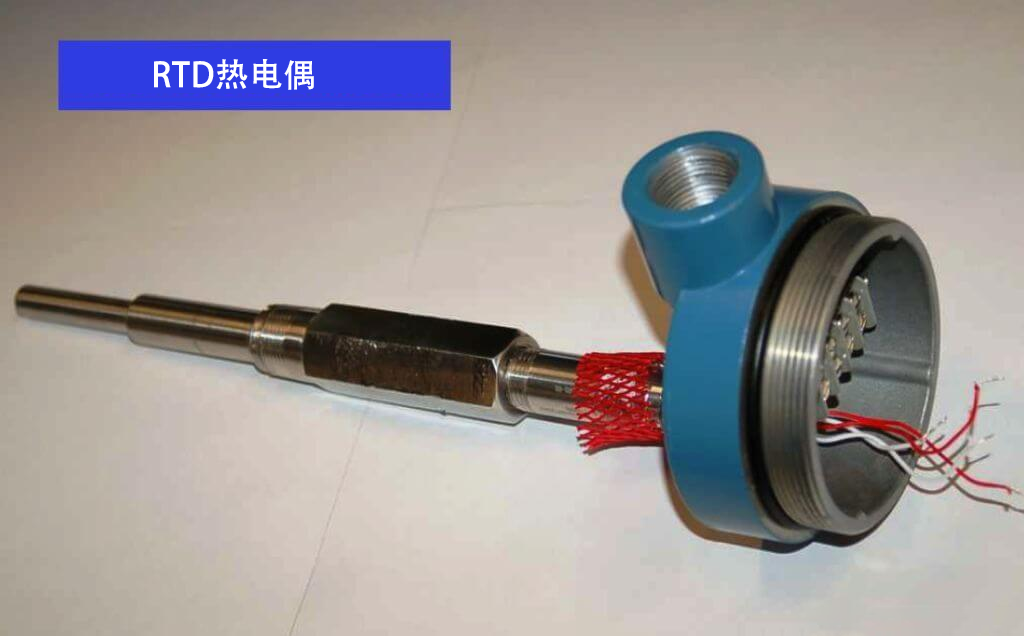
Temperature sensor accessories
One of the most important attachments of any temperature sensor element is the resistance cover of the heat cover. This can be considered as a thermal conductivity in the process container or pipeline, allowing temperature -sensitive instruments to detect the temperature without opening the hole on the container or pipeline. The thermocouple sleeve is essential for temperature components (RTD, thermocouple, thermometer, etc.) must be installed in the case without pressure.
Thermal tube can be made of any material that is heat -conducting, pressure resistance and does not have chemical reactions with the process. Most thermocouple sleeves are made of metal (stainless steel or other alloys) or ceramic materials.
This shows a simple chart, which shows the thermocouple sleeve used with the thermometer:
Usually, it is best to install the thermocouple sleeve in the pipe instead of the container, because the larger fluid in the pipeline will accelerate the transmission of flow heat and help remove the solid dirt on the surface of the thermocouple jacket.
If the thermometer is demolished for maintenance or replacement, the thermal sleeve will keep the pipeline pressure integrity (there is no process of fluid leakage, and no air leakage):

The real (stainless steel) protective photos are displayed here. The photo on the left shows the entire length of the protective cover. The photo on the right shows the end of the inserting temperature sensing device:
The next photo shows a complete RTD temperature sensor component (connector, RTD temperature sensor, and thermocouple sleeve):
Although the thermocouple sleeve is useful, they are not without warning. All thermocouple sucks, no matter how good it is installed, will increase the first -order stagnation of temperature sensors due to its quality and comparison. Obviously, a few pounds of metals will not be quickly heated and cooled like a few ounces of RTD temperature sensors or thermocouple puppets. Therefore, adding thermal puppets to the sensor element to reduce the response speed element of any temperature sensing. What is not obvious is that if this time lags, if it is serious enough, it may damage the stability of the feedback control. Due to this lag, the control system that receives the "delay" temperature measurement value will not be able to see the real -time temperature of the process in real time.
A potential problem of the heat suite is the incorrect installation of temperature sensing elements. This component must be inserted without the bottom of the hot hole of the hot cover. If there is any air gap between the end of the temperature element and the bottom of the thermal tube hole, this will increase the second time delay of the measurement system (note). Some heat sleeve contains a spring clip at the bottom of the blind hole to help maintain the continuous contact between the metal and the metal between the sensing elements and the tube wall.
Note: The gas gap acts as thermal resistance, and the quality of the component itself acts as the heat. Therefore, the addition of air gaps forms the hot "RC time constant" delay network, which is secondary to the heat delay caused by the heat suite. This adds another "order" delay to the system, not just increased its hot time constant. Generally speaking, multi -order lag is not conducive to process control, because they will increase the phase shift in the feedback circuit and may cause oscillation.
Applicability of crafts/instrument
The main consideration of choosing a suitable temperature sensing element for any application is the expected temperature range. Mechanical (dual metal) and filling system temperature sensors are limited to relatively low process temperatures, and signals cannot be passed at places where the distance is far away.
The thermocouple is the strongest and most wide range of contact temperature sensor so far. The accuracy varies from the type and installation quality of the thermocouple.
The RTD temperature sensor is more vulnerable than the thermocouple, but they do not need to refer to compensation and be more linear in nature.
Optical sensor lacks the ability to measure the fluid temperature in the container unless a transparent window is provided in the container to make the optical transmission reach the sensor. Otherwise, the best thing that optical sensors can do is to report the skin temperature of the blood vessels. For monitoring of the surface temperature of the solid object, especially an object that is impractical or even dangerous (such as the electric insulator on the high -voltage power line), the optical sensor is the only appropriate solution.
Chemical response is a problem with contact sensors. If the sensor element is fixed in the thermocouple sleeve, you must choose the thermocouple sleeve to minimize the response to the process of the process. Considering the nature of most thermocouple metals (iron, nickel, copper, etc.), the naked heat power puppet is particularly vulnerable to the chemical reaction, and it must be carefully selected for a specific chemical chemistry to avoid reliability problems in the future.

